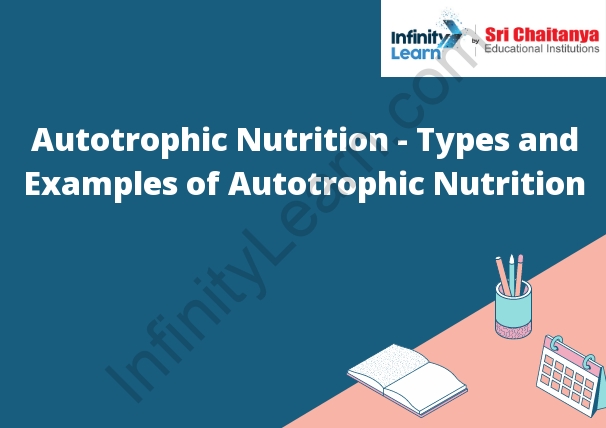Table of Contents
What is Autotrophic Nutrition?
Autotrophic Nutrition is a type of nutrition where the organism obtains its carbon from inorganic sources and its energy from the sun or from chemical oxidation of inorganic molecules .An autotroph is an organism that can create its own food through photosynthesis or chemosynthesis.

Modes of nutrition
There are six modes of nutrition:
- Autotrophic nutrition: Autotrophs are organisms that can produce their own food from simple inorganic molecules. They use energy from the sun or from inorganic chemical reactions to produce organic molecules from simple inorganic molecules. Examples of autotrophs include plants and algae.
- Heterotrophic nutrition: Heterotrophs are organisms that cannot produce their own food and must obtain organic molecules from other organisms. They use energy from the sun or from inorganic chemical reactions to produce organic molecules from simple inorganic molecules. Examples of heterotrophs include animals and fungi.
- Parasitic nutrition: Parasites are organisms that live in or on another organism and obtain food and shelter from their host. Parasites typically harm their host in some way. Examples of parasites include tapeworms, leeches, and ticks.
- Saprotrophic nutrition: Saprotrophs are organisms that obtain food by scavenging or decomposing dead organic matter. They do not harm living organisms. Examples of saprotrophs include mushrooms and bacteria.
- Symbiotic nutrition: Symbiotic organisms are two or more organisms that live in close association with each other and share food. The relationship can be mutualistic (both organisms benefit), parasitic (one organism benefits while the other is harmed), or commensalistic (one organism benefits while the other is unaffected).
Photosynthetic autotrophs
are organisms that produce their own food from simple inorganic molecules, such as carbon dioxide and water, using energy from the sun. The process of photosynthesis uses light energy to convert carbon dioxide and water into glucose and oxygen gas. Glucose is a simple sugar that provides the cells with energy, while oxygen gas is released into the atmosphere.
Chemoautotrophic Nutrition
Chemoautotrophic Nutrition is a process where an organism uses energy from a chemical reaction to create its own food. This process can occur either through the oxidation of inorganic compounds or the reduction of organic compounds.
Plants and Their Nutrition Requirements
- Plants need a variety of nutrients to grow and thrive. These include nitrogen, phosphorus, potassium, calcium, magnesium, and sulfur. Plants also need small amounts of other nutrients, including copper, zinc, and boron.
- Nitrogen is essential for leaf growth and is found in most fertilizers.
- Phosphorus is necessary for root growth and flowering and is also found in most fertilizers. Potassium helps plants resist disease and pests and is also found in most fertilizers.
- Calcium is important for cell wall strength and fruit production, and is often found in fertilizers as a minor nutrient. Magnesium is necessary for chlorophyll production and is often found in fertilizers as a minor nutrient.
- Sulfur is necessary for protein synthesis and is often found in fertilizers as a minor nutrient.
- Copper, zinc, and boron are minor nutrients that are essential for plant growth but are not always found in fertilizers. Copper is necessary for photosynthesis and helps plants resist disease. Zinc is necessary for protein synthesis and helps plants resist disease. Boron is necessary for cell wall development and helps plants resist disease.
Factors Affecting Photosynthesis Process
The photosynthesis process is affected by a number of factors, including the availability of light, water, and carbon dioxide, as well as the temperature and humidity of the environment. Photosynthesis also depends on the type of plant, with some plants being able to photosynthesize at night, while others require light to function.
Purpose of Photosynthesis
Photosynthesis is the process that produces organic molecules from simple inorganic molecules from the sun’s energy. The process of photosynthesis occurs as an energy-providing reaction in the chloroplasts of photosynthetic cells. Light energy is converted into organic matter, such as glucose. This process is the foundation of the food chain, and ultimately the source of all food on Earth.









